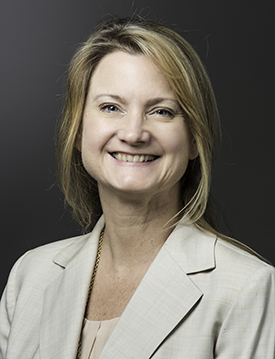
Dr. Debora Goldberg led the new study, one of the few that have examined anxiety as a component of burnout and the rate of burnout among different professionals in a primary care practice.
New George Mason University Study examines rates of anxiety, frustration, and other behaviors connected to burnout among health care professionals in primary care
Clinician burnout is a growing public health concern, with the National Academy of Science reporting that 35-54% of U.S. nurses and physicians exhibit substantial symptoms of burnout. New research led by the College of Health and Human Services at George Mason University found that health care professionals were more than twice as likely to report burnout with higher levels of anxiety and frustration than those who reported lower levels of anxiety and frustration. Additionally, primary care physicians reported burnout at twice the rate of other health care professionals in primary care practices.
Dr. Debora Goldberg, associate professor of health administration and policy, led the new study, published in the Journal of the American Board of Family Medicine, one of the few that have examined anxiety as a component of burnout and the rate of burnout among different professionals in a primary care practice.
“Burnout is a syndrome characterized by high emotional exhaustion, high depersonalization, and a low sense of personal accomplishment from work,” explains Goldberg. “It is important to understand how health care professionals respond to these changes and if certain groups are more likely to experience burnout and why. This is critical due to the tremendous amount of change taking place in the health care industry, projected physician and nurse shortages, and most recently the extraordinary responsibilities placed on them during the COVID-19 pandemic.”
The research team surveyed 1,273 healthcare professionals from 154 primary care practices in Virginia. They used the Change Diagnostic Index© (CDI) to assess the participants’ feelings, emotions, and attitudes following organizational and technological change.
They found that rates of burnout varied by profession in primary care practices. Physicians reported the highest rates of burnout at 31.6%, nearly twice the rate of other staff in these practices: 17.2% of advanced practice clinicians, 18.9% of clinical support staff, and 17.5% of administrative staff.
Physicians who experienced increasing anxiety and withdrawal were more than three times as likely to report burnout compared to those who did not experience high levels of these domains. Anxiety was high across health care professionals and anxiety significantly raised the odds of burnout across health care professionals.
“This is not just a physician problem,” explains Goldberg. “These findings tell us that we need to prioritize understanding and addressing clinician burnout at a system level and at a local level. The human cost as well as significant physician shortages expected in the future make this a critical public health concern.”
The researchers suggest that a better understanding of how health care professionals respond to change and burnout can help guide programs and services to support individuals experiencing burnout and build strong work environments to prevent burnout among healthcare professionals in the future.
This study was funded by the Agency for Healthcare Research and Quality (AHRQ) under grant number R18HS023913.
###
About George Mason University
George Mason University is Virginia's largest and most diverse public research university. Located near Washington, D.C., Mason enrolls 38,000 students from 130 countries and all 50 states. Mason has grown rapidly over the past half-century and is recognized for its innovation and entrepreneurship, remarkable diversity and commitment to accessibility. For more information, visit https://www2.gmu.edu/.
About the College of Health and Human Services
George Mason University's College of Health and Human Services prepares students to become leaders and shape the public's health through academic excellence, research of consequence and interprofessional practice. The College enrolls 1,917 undergraduate students and 950 graduate students in its nationally recognized offerings, including: 5 undergraduate degrees, 12 graduate degrees, and 11 certificate programs. The College is transitioning to a college public health in the near future. For more information, visit https://chhs.gmu.edu/.
